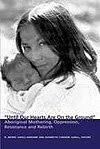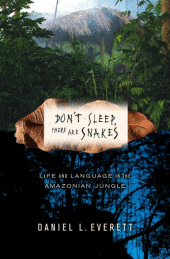 "Until Our Hearts Are On the Ground”: Aboriginal Mothering, Oppression, Resistance and Rebirth, edited by D. Memee Lavell-Harvard and Jeannette Corbiere Lavell, is an eye-opening and diverse collection of papers published by Demeter Press, the publishing division of York University's Association for Research on Mothering.
"Until Our Hearts Are On the Ground”: Aboriginal Mothering, Oppression, Resistance and Rebirth, edited by D. Memee Lavell-Harvard and Jeannette Corbiere Lavell, is an eye-opening and diverse collection of papers published by Demeter Press, the publishing division of York University's Association for Research on Mothering. The book's title comes from a Cheyenne proverb:
“A nation is not conquered until the hearts of its women are on the ground. Then it is done, no matter how brave its warriors nor how strong their weapons.”Until Our Hearts Are On the Ground's diversity is both its strength and a minor drawback. The multiple voices, different indigenous peoples, varied histories, and the personal experiences of motherhood that Lavell-Harvard and Lavell (mother and daughter editors) bring together are amazing, but the diversity is sometimes overwhelming. It can be difficult to switch gears between the different topics and styles of writing in the contributions. Lavell-Harvard and Lavell acknowledge this in the first paper ("Thunder Spirits: Reclaiming the Power of Our Grandmothers"), noting that "There is such a range of Aboriginal women's experiences existing somewhere between "traditional" and "modernized" that perhaps the only thing we do share is what Mihesuah calls a 'commonality of difference'"(p. 2).
They go on to eloquently and convincingly explain how:
"the historical persistence of our cultural difference generation after generation (despite the best assimilative efforts of both Church and State) is a sign of our strength and our resistance. That we have historically, and continually, mothered in a way that is "different" from the dominant culture, is not only empowering for our women, but is potentially empowering for all women (p. 3)."
Lavell and Lavell-Harvard do a skillful job of organizing the diverse works into four sections: one on pregnancy and becoming a mother, the ideology and practice of motherhood, the state's influence on motherhood, and literary representations of motherhood.. And the references and the endnotes are remarkable - there are scads of wonderful, intriguing sounding articles, books, and papers from the most obscure places in each article's references.
A few of the papers are written in an academic style that can be off-putting for those not accustomed to it. If you persevere, however, the insights into different cultures and social groups, and the historical understandings gained, are definitely worth a few obtuse paragraphs of sociology, medical anthropology, ethnohistory, or literary analysis. I learned something, or was moved, or came to a new appreciation for the strength that the mothers portrayed have shown in the face of incredible hardship in every single one of the papers in this book.
The seventeen papers include reflections on motherhood amongst the Anishnaabe (Ojibway) of Canada, cultural and personal implications of the medicalization of birth (among Anishnaabe and Mi'kmaq communities), a fascinating look at historic Haudenosaunee (Iroqouis) mothering (especially interesting for those studying non-patriarchal societies and/or gender equality) , and one Metis mother's powerful account of how traditional parenting skills programs made a difference in her life.
“Back to Basics” describes mothering, and the impact that grandmothers and aunts - also prominent in several of the earlier papers on Canada - have on children’s survival (especially from kwashiorkor) in urban Ghana. On my first look at the book, I thought that Africa was a far cry from Canada, and wondered how this piece could possibly fit in with the other papers, but the authors do show how colonization and various forms of oppression have had a similar effect on motherhood in many areas of Africa, North America, and Australia. Similarly, three papers on Aboriginal mothers in literature, including works by authors Leslie Marmon Silko, Louise Erdrich, and Nugi Garimara (aka Doris Pilkington, the author of Follow the Rabbit-Proof Fence) fit well in this book.
"Aboriginal Mothering: An Australian Perspective" provides an important look at "the Stolen Generation" (which many North Americans first heard about in the movie The Rabbit-Proof Fence), focusing on how women and families are re-connecting after the long period of cultural genocide that happened when children were taken by the Australian government in the years between 1905-1970. This paper is fittingly followed by a couple of papers on Canadian state child protection policies and indigenous mothers, the history and lingering effects of Canada's residential schools, and a short but revealing look at the impact of Canada's Indian Act and its context in colonization and oppression, authored by the editors.
As described on page 188, Jeannette Corbiere Lavell (one of the editors and co-author of "Aboriginal Women vs. Canada" ) was the first woman to challenge the section of the Indian Act's Section 12(1)(b), which was finally amended by Bill C-31 in 1985. As an American, I had heard the Canadian term "status Indian", but I was unfamiliar with the implications of how the Canadian Indian Act worked (and continues to work with its 1985 modifications). As Lavell and Lavell-Harvard describe,
"For well over a hundred years, beginning in the 1870s and continuing until as recently as 1985, under the provisions of section 12(1)(b), upon their entrance into marriage with a man not possessing Indian Status, the Canadian government stripped tens of thousands of Aboriginal women (and any subsequent children) of their Indian Status, and all the rights such status entailed including access to health care, education, and perhaps most importantly the right to live in their own homes and communities. Conversely, under the Act, not only did Indian men not lose status upon marriage to a non-aboriginal, their spouses gained status as did their children...Furthermore, since the extinguishment of Indian Status was irrevocable, many Aboriginal women were left without recourse in the even of domestic violence, divorce, or widowhood (p. 187)."As Lavell and Lavell-Harvard point out, Bill C-31 (which restored Indian status to over 100,000 people)
"has simply created several new categories of Indian and only postponed the extinguishment of Indian status a couple of generations. While Lavell, and many other women like her, were reinstated as 6(1) Indians, her three children were classified as 6(2) Indians, which means their children, her grandchildren, will only be considered Indians should her children marry status Indians. Should her children marry non-Indians, her grandchildren will automatically be considered non-Indian. In a sad twist of fate, or perhaps a particularly ingenious governmental trick, Lavell's struggle for the right to marry whomever she pleases and still remain an Indian is currently being relived by her children" (p. 191).This papers in this part of the book - the section titled "'Big Mother': The Role of the State in the Performance of Mothering" - are the most disturbing to read, but also the most illuminating.
I believe that most readers will come away from Until Our Hearts Are On the Ground with a deeper understanding of how history (and current government policies) affect families through their actions on mothers and mothering, as well an enduring admiration for the women who showed such strength in the past, and who continue to fight for their rights today. Until Our Hearts Are On the Ground also demonstrates the richness and diversity of Aboriginal motherhood, and should lay the idea that there is "one right way to mother" permanently to rest.










